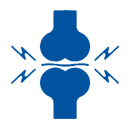
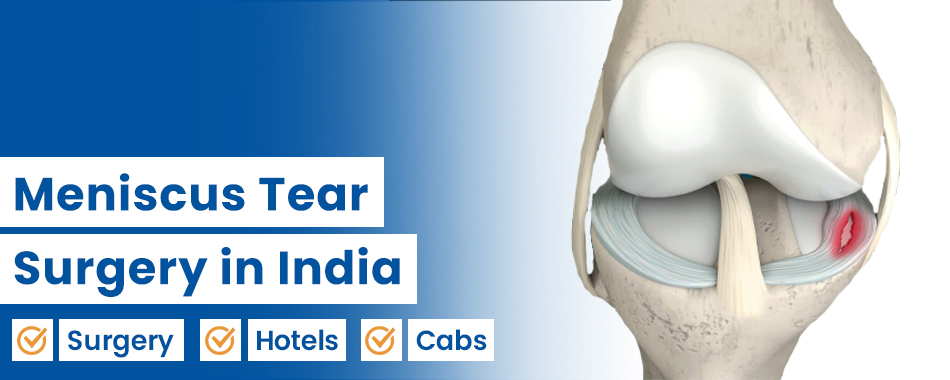
A meniscus tear is one of the most common knee injuries, often caused by sudden twisting, pivoting, or cutting movements that put stress on the knee joint. It frequently occurs during sports and other outdoor physical activities, but can also result from everyday movements, especially in older adults where the meniscus weakens over time. A torn meniscus can lead to symptoms such as swelling, sharp pain, stiffness, and difficulty bending or straightening the knee fully.
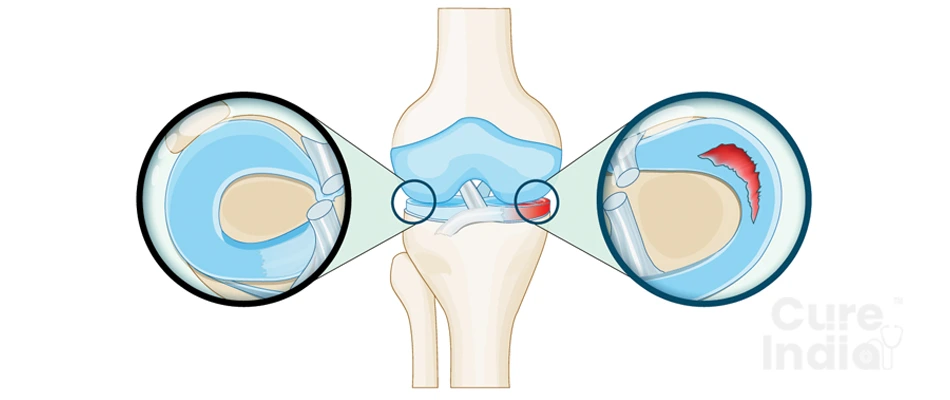
When left untreated, a meniscus tear can worsen and interfere with daily activities and mobility. Meniscus tear surgery when performed arthroscopically is a highly effective treatment that helps restore knee stability, reduce pain, and improve long-term joint function. India has become one of the best countries for getting advanced orthopedic treatments, offering top-quality surgical expertise, modern technology, and quick recovery pathways for patients needing affordable treatment options.
A meniscus is a c-shaped or donut-shaped cartilage inside the knee. The cartilage is in between the thighbone and shinbone. It works as a shock absorbent of the knee. Each knee contains two menisci. These two menisci are medial and lateral meniscus. The medial meniscus is situated on the inner side of the knee joint. On the other hand, the lateral meniscus is outside the knee. A meniscus tear occurs when this cartilage becomes damaged, usually due to twisting or pivoting movements, sports injuries, or age-related wear and tear.
A meniscus tear happens by knee twisting. The injury can be contact or non-contact. Sports such as football, volleyball, and soccer can cause non-contact meniscus tears. It is because the player changes the knee direction suddenly and the cartilage tears. Kneeling, deep squatting, or heavy weight lifting can also cause the meniscus tear.
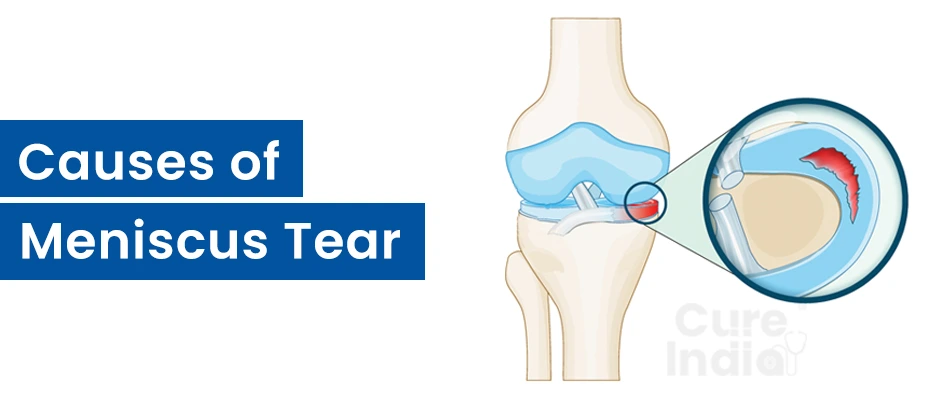
The degenerative changes in older adults can cause the meniscus tear. The tissues are worn out when people age and are prone to tears. Approximately 12-14% of people over 60 years of age have meniscus tears.
Not every meniscus tear has symptoms. However, generally one will feel pain within 24 hours of a torn meniscus. One may feel the following symptoms:
Meniscus tear surgery is a specialised arthroscopic procedure to treat damage to the meniscal cartilage. Whether caused by sports injuries, trauma, or age-related degeneration, a torn meniscus can lead to pain, swelling, and restricted mobility. Through minimally invasive techniques such as meniscus repair or partial meniscectomy, surgeons restore knee stability, preserve joint function, and support quicker recovery. Let's hear from some of our best doctors for meniscus tear surgery in India:
Dr. Manoj Miglani is a top orthopedic and sports medicine surgeon specialising in meniscus tear repair and arthroscopic knee surgery. With extensive experience of over 20 years in minimally invasive techniques, he is an expert in treating meniscal injuries, ligament tears, and other knee joint disorders.
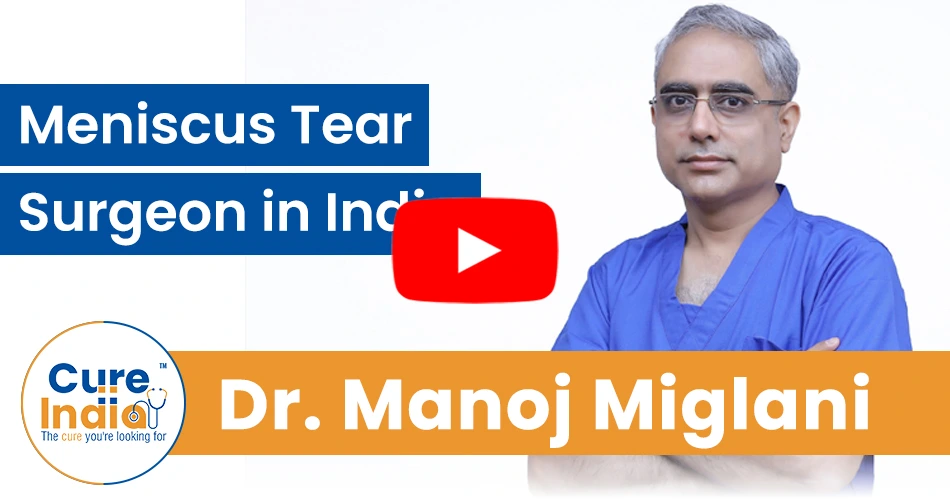
Dr. Aashish Chaudhry is a leading orthopedic surgeon in India, specialising in arthroscopic knee procedures, including meniscus tear repair. He employs advanced minimally invasive techniques and has a thorough understanding of knee biomechanics, which helps restore joint stability and function, making him one of the best choices for meniscus tear surgery in India.

Dr. Hitesh Garg is an experienced orthopedic and spine surgeon with strong expertise in arthroscopic knee surgery and meniscus repair. He is known for treating complex meniscal injuries, cartilage damage, and knee instability using advanced minimally invasive techniques.

Dr. Nitiraj Oberoi is a top-rated orthopedic and sports medicine specialist with extensive experience of over 33 years in meniscus repair, ACL reconstruction, and arthroscopic knee surgery. He utilises state-of-the-art techniques to repair damaged menischi while preserving knee function and promoting faster rehabilitation.

The 5 general types of meniscus tears are Radial, intrasubstance, Horizontal, Flap, and Bucket handle meniscus tears.
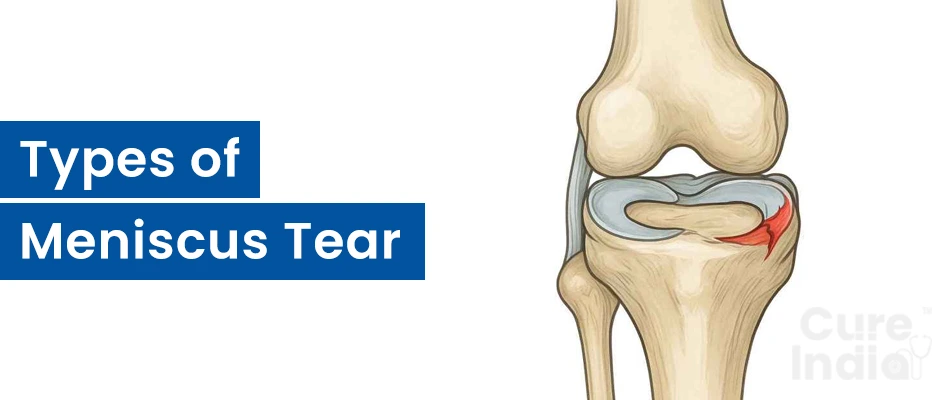
A radial meniscus tear is a common type of tear. The orientation of this tear is perpendicular to the circumference of the meniscus. This part is avascular and does not contain any blood vessels. That means, without tissues and blood supply this tear cannot heal without any treatment.
Radial meniscus tears need arthroscopic meniscus surgery as a treatment. Untreated radial tears for a long time will get worse over time. Seek advice from a certified orthopedic consultant or surgeon.
Intrasubstance meniscus tears are known as degenerative meniscus tears. An intrasubstance meniscus tear or incomplete tear is an early degenerative change in the meniscus. These changes are generally asymptomatic.
Intrasubstance meniscus tear does not require surgery. However, without proper treatment, the intrasubstance meniscus tear will get worse.
The horizontal tear is parallel to the meniscus surface. It may occur from a blister in the inner portion of the meniscus. The tear can split through meniscus surfaces and divide a meniscus into two halves. It looks like an open mouth of fish with upper and lower jaws.
This type of tear results in swelling and stiffness. However, the tears may not show symptoms in the state of inactivity. Many athletes continue playing after getting horizontal meniscus tears. A horizontal meniscus tear may require surgeries like total knee replacement.
A flap meniscus tear is sometimes also known as a parrot beak tear. In this type of meniscus tear, the cartilage is peeled and stuck in the joint. The tear sometimes shows symptoms of catching or locking because it can flip in and out of position. Untreated flap meniscus tears can develop long-term knee problems like arthritis.
In the bucket handle meniscus tear, the tear occurs in the central zone of the meniscus. This tear persists in knee movement because of the torn meniscus that blocks the knee motion. Bucket-handle meniscus tears require urgent medical action. The treatment helps the knee to bend back.
The MRI and other diagnosis procedures describe the location of the tear. The types are as follows.
This type of tear happens near posterior horns. It is associated with the ACL or anterior cruciate ligament.
These types of tears are located in the front or at the anterior horn. This type of tear does not happen usually.
These kinds of tears occur in the center of the meniscus where there is no blood supply. Hence, central meniscus tears are not responsive to treatment.
Peripheral tears can be repaired by the surgeon. This type of meniscus tear is situated in the peripheral area of the meniscus.
The orthopedic surgeons at CureIndia, first do clinical tests and physical examinations to know the patient’s meniscus tear conditions. After that, they usually ask for X-rays and MRIs to know the positions better. The imaging technique X-ray may not show the tear sometimes. However, an MRI gives 70-90% accurate results for the worst type of meniscus tear.
There are 3 grades classified based on MRI scans. Grade 1 and Grade 2 meniscus tears may not be considered for the meniscus surgery. Whereas, Grade 3 tears are always recommended for surgery and rehabilitation.
Your doctor may ask about your medical history before starting treatment. You should explain whether you are facing recurrent swelling or if you have a history of a bad injury. Sometimes, people may have ACL injury (Anterior Cruciate Ligament) and meniscus tear. In that case, knee arthroscopy helps heal meniscus tear and in arthroscopic ACL reconstruction.
Grade 1 and Grade 2 meniscus tears may not require meniscus tear surgery. An orthopedic surgeon will diagnose the tear and advise you of necessary lifestyle changes. The non-surgical treatment includes physical therapy and nonsteroidal medications. Physical therapy helps build muscle strength around the knee joint. The nonsteroidal anti-inflammatory drugs help relieve the pain associated with the meniscus tear.
A Grade 3 torn meniscus requires torn meniscus surgery to repair meniscus tears. There are mainly two types of surgeries done by the orthopedic surgeons in India. These two types of meniscus tear surgeries are 1. Arthroscopic Meniscus repair, and 2. Meniscectomy.
The cost of meniscus tear surgery in India s very affordable and ranges from around $2,000 to $3,000 depending on the type of procedure and the hospital. India offers highly advanced arthroscopic knee surgery at a fraction of the price compared to Western countries like the US and the UK, making it an affordable choice for international patients.
| Treatment Name | Cost in India | Stay in India |
|---|---|---|
| Meniscus Tear Treatment in India | $2,500 - $3,000 | 1 week |
For a meniscus tear surgery in India, whether it is a meniscectomy or a meniscus repair, the healing time is typically 2-6 weeks. However, the healing time varies depending on the patient's health conditions. A meniscectomy heals faster than a meniscus repair surgery. The healing period also depended on the following factors.
1. Age:
Patient age is a factor for recovery. Younger people with strength may recover sooner than aged people with bone loss.
2. Weight:
Heavier weight may interrupt your recovery time and make it longer than usual.
3. Type of Surgery:
The meniscal repair takes more time to heal compared with it meniscectomy. If anyone had sutures to heal meniscus tears, then it may take more time to heal than partial meniscectomy.
4. Arthritis:
People with arthritis or diabetes or having both illnesses may face difficulties in recovery. In those cases, the orthopedic surgeon may suggest some nutrition supplements and certain medications to feel relieved.
With good health, one will start healing within 24-48 hours after a meniscus surgery. Must discuss your concerns and follow your doctor's advice carefully for long-term healthy results.


Globally Trusted Brands
Inquire Now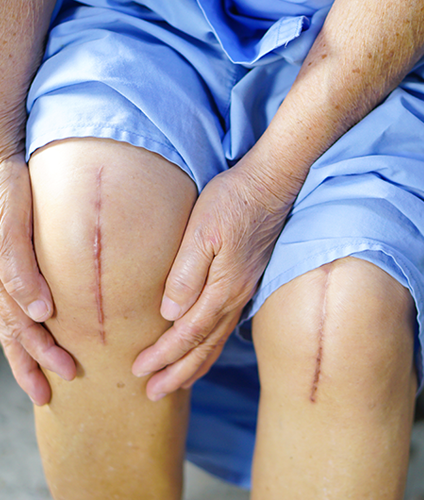
Knee, Hip and Shoulder Replacements
Share Your Reports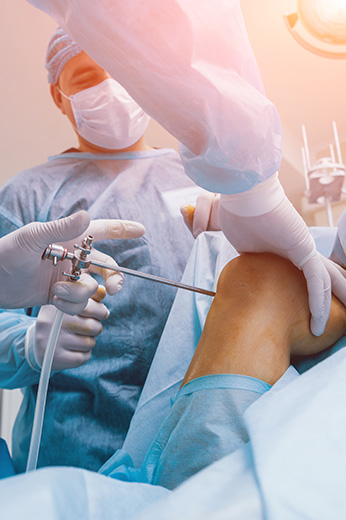
Computer Navigated and Keyhole Knee Surgeries
Recover Fast